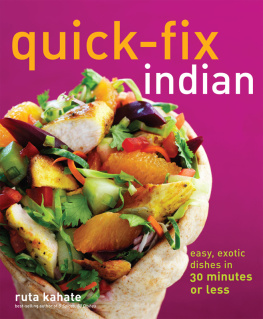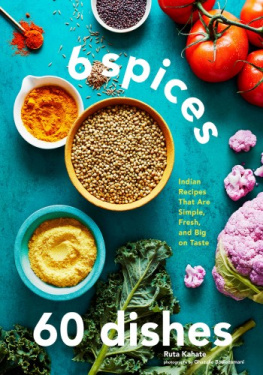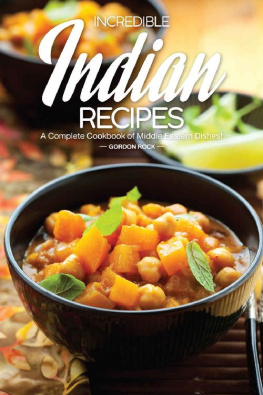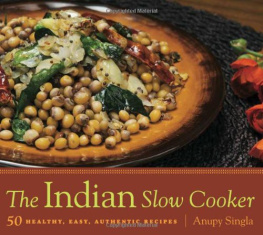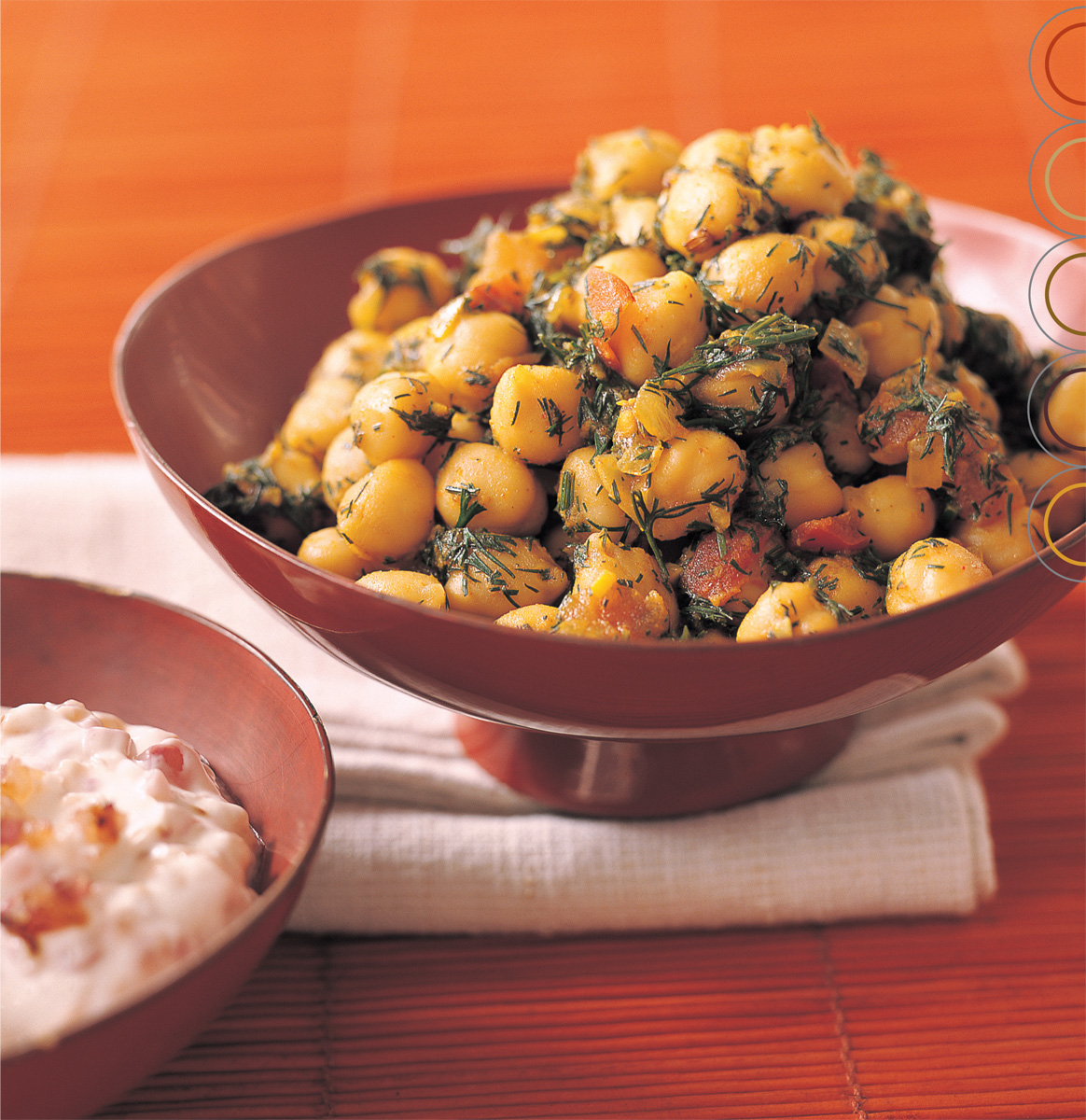
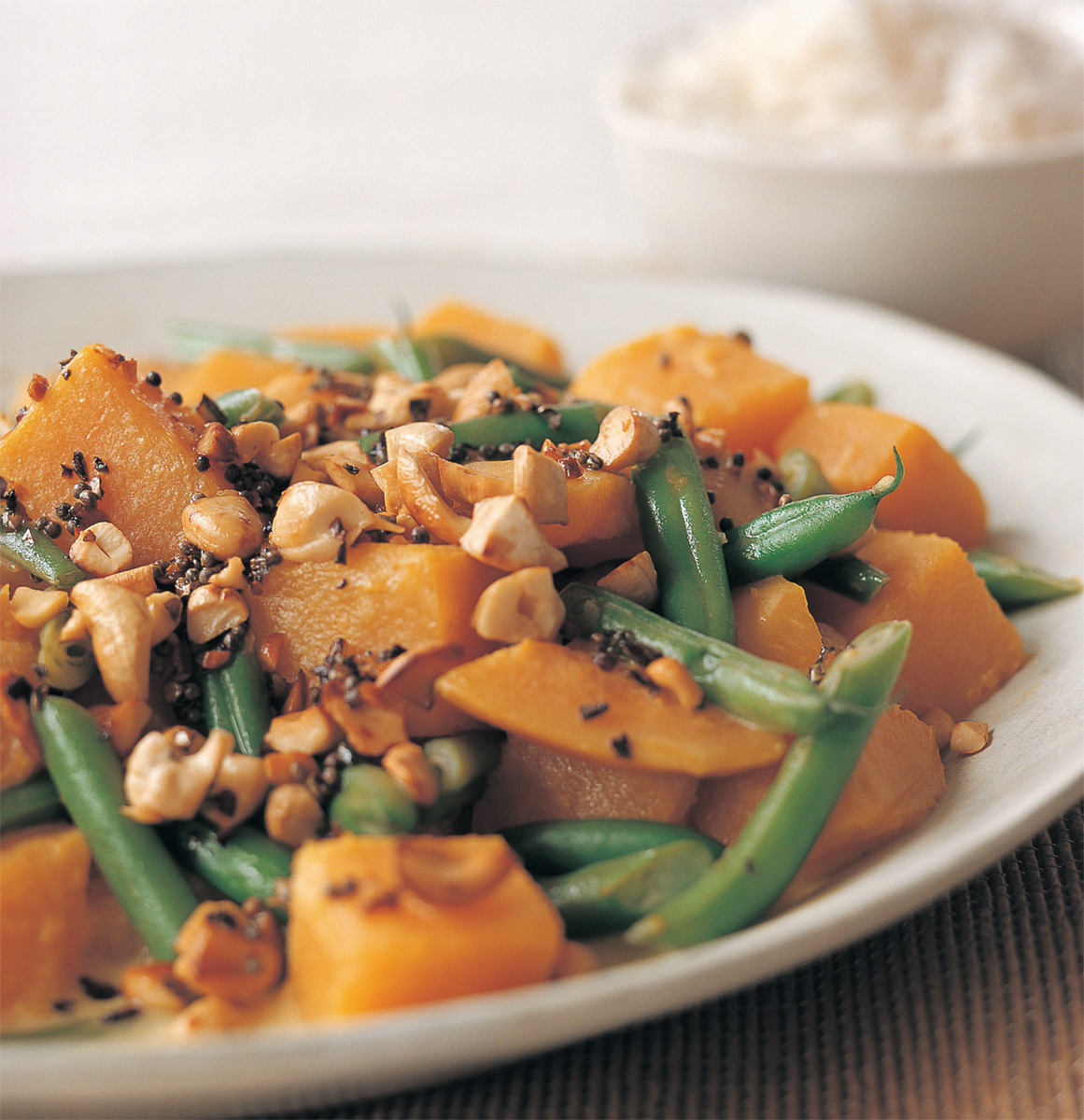

For Ma and Tata,
my beloved parents, who introduced me to a world of excellent eating and cooking.
Text copyright 2007 by Ruta Kahate.
Photographs copyright 2007
by Susie Cushner.
All rights reserved. No part of this book may be reproduced in any form without written permission from the publisher.
ISBN: 978-1-4521-3373-7
The Library of Congress has previously cataloged this title under ISBN: 978-0-8118-5342-2
Designed by Benjamin Shaykin
Typeset in FF Clifford 9, MT Grotesque,
and H&FJ Numbers Indicia
Prop styling by Mary Ellen Weinrib
Food styling by Allison Attenborough
The photographer wishes to thank the following stores that loaned props: H Groome, Nine Main St., Southampton, New York 11968, and 294 South County Rd., Palm Beach, Florida 33480; Calvin Klein Home, Madison Avenue at 60 St., New York, New York 10021; Maya Schaper, 106 W. 69 Street, New York, New York 10023; Paula Rubenstein, 65 Prince St., New York, New York 10012; and Takashimaya New York, 693 Fifth Avenue, New York, New York 10022.
Chronicle Books LLC
680 Second Street
San Francisco, California 94107
www.chroniclebooks.com
Acknowledgments
It all began with my parents, Gangadhar and Priyadarshini Kahate. Passionate about food, theyd constantly experiment and improvise in the kitchen, making meal times a joy. Seeking allies, they taught me and my brother, Yashodhar, how to cook when I was eleven, encouraging us through our early kitchen disasters. Without guidance from them and constant good-natured teasing from my brother, himself an excellent cook, Id never have inherited their love and curiosity for all things culinary.
And without my husband Nevilles support, I wouldnt have taken that passion and turned it into my profession. He urged me to pursue my hobby as a career and edited my recipes ruthlessly to the point where I could write them in my sleep. Hed hold our screaming baby for hours while I was teaching a cooking class and then help do the dishes after the class.
My kind, gentle mother-in-law, Vivianne deSouza, continues to be another huge culinary influence, sharing my ability to talk about food any time of day or night. Over the years, she taught me everything she knows about Goan cuisine, generously sharing her old family recipes.
This cookbook wouldnt be a reality without my dear friend Linda Carucci and my editor, Amy Treadwell. I first met Amy while teaching a cooking class at Lindas home school and we became friends over a shared interestour children. Everyone should be lucky enough to get as kind and patient an editor.
And finally, twenty-five recipe testers all over the country and in the United Kingdom gave freely of their time and opinions, helping me decide which recipes made the cut. They were guided in this effort by my able assistant, Erin Wakida, who held the fort admirably while I was absent for several weeks leading my annual culinary tour in India.
Thank you all from the bottom of my heart.
table of contents
you eat like this every day?
I get asked this question all the time, usually by people with busy schedules or children. Its no use explaining that the meal was quite simple to make. Youre a chef, they scoff. Were not. They have all these romantic notions of Indian cooking: complex sauces that take all day to cook, cupboards full of spices with unpronounceable names, secret techniques passed down from ancestors in a faraway land.
While Indian cuisine can be all of those things (my mothers signature goda masala contains forty-two ingredients, for instance), very few Indians cook that way on a daily basisthey have busy schedules and children, too. But I can understand my friends disbelief. A weeknight meal quickly put together with a few spices can taste as if Id slaved over it for hours.
Thats the beauty of Indian cooking. You can create dishes that taste as though you put in a lot more ingredients and effort than you really did. All you need is a tiny bit of direction. And thats where this cookbook comes in.
My premise is simple: Using five common spices and a few easily available ingredients, you can make fifty superb, well-balanced Indian dishes. Ive carefully chosen the spices for their aromatic properties and versatility. While the ingredients and steps are simple, youll find the results are anything but.
Happy cooking, and may the Kitchen Gods be with you.
my promise to you
indian food thats not intimidating
To use this cookbook, you wont even have to step into an Indian store. The spices and ingredients are readily available at your local supermarket or health food store. The whole point is to keep everything simple and accessible enough that youll be motivated to cook Indian as often as possible.
simple recipes, but not simplistic dishes
The recipes in this book dont require special equipment or hours of prep work, yet theyll yield some pretty spectacular dishes. My favorite party dish, Roasted Lamb with Burnt Onions , needs just two spices and a few short steps to create a flavorful, meltingly tender roast your guests will be talking about for days.
the same spices, but not the same flavors
Although youll be using combinations of the same spices, every dish will have a unique flavor. Steamed Cauliflower with a Spicy Tomato Sauce share the same four spices, yet each dish tastes completely different.
rule #1: no hard-and-fast rules
Although Ive provided sample menus goes really well with a green salad and French bread. If it feels right to you, thats really all that matters.
five simple spices
The following spices will allow you to make dozens of balanced, complex Indian dishes. They are common enough that youll probably find them at your local supermarket. If not, look for them at a health food store.
coriander seeds add a lemony, earthy flavor thats best when the seeds are freshly ground. Coriander is the seed of the cilantro herb, and is one of the worlds oldest known spices; traces of it have even been found in the tomb of Tutankhamen in Egypt. Used whole, coarsely crushed, or ground, coriander is an indispensable part of Indian cooking. Since it complements other spices so well, it finds its way into many of the Indian spice blends known as garam masalas.
cumin seeds have an aromatic, peppery flavor. Part of the parsley family, cumin was an important spice to the ancient Egyptians, Greeks, and Romans. Its certainly one of the most widely used spices in India, where it may have arrived via the armies of Alexander the Great. Indians cook with whole, ground, and roasted cumin. Aside from cooking, they like to chew cumin seeds after meals for digestive reasons.
mustard seeds are pungent, slightly bitter, and tiny. In fact, in ancient India, one mustard seed was the smallest weight on the scale. While mustard is used mostly as a prepared condiment in the West, Indians use the whole seeds in everything from simple dishes to complex curries, from spice blends to Indian-style pickles. Most Indian recipes use the black or brown variety, but in a pinch you can substitute the yellow kind.
Next page

